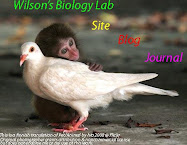
Scientists in Leeds, England plan to spend 50 million pounds (about 81 million US dollars) over five years to try and create ways to keep human bodies active past 50 years old. Human bodies eventually give out and stop working properly, especially in areas like the joints, such as the hips, elbows, and knees, and heart valves. With modern health care, medicines and vaccines, humans live longer and longer and their bodies become weaker and weaker with age. So scientists at the Leeds University are attempting to create better joint replacements and heart valves, plus more to keep older people active and keep their bodies healthier.
They have already successfully made a new hip replacement that would not wear out like the current one. Humans are expected to take 100 million steps in 50 years, and these new hip joints should be able to last that long, as opposed to current standard replacements, which most likely will not last more then 20 years. The new joints use a cobalt system with a ceramic ball that has been scientifically proven to be much more durable and tough then the previous replacements. Hips are one area on the body that is inclined to give out over time, but not the only one. They also made similar joint replacements for the knees. With more durable knees and hips, humans that would normally be too weak to walk may someday be able to walk unaided by walkers and have an easier time climbing inclines and staircases.
The scientists at Leeds are working on lots of other implants and transplants to keep the human body active. One of the most interesting and scientifically notable contributions they have made are transplantable tissues that the human body can adapt to and actually make a part of themselves. The tissue is basically a shell, taken from a donor or animal suitable as one. The scientists take a healthy organ or tissue from another human or animal and break it down using chemicals until they remove the cells of the other human or animal. Then it can be put into the recipient and the recipient can plant their own cells into. Having more organic tissues that could become part of the body easier would eliminate the fear of the body rejecting an organ from a donor. The scientists have already successfully made a heart valve this way.
The scientists have already tested the method on 40 human patients, and an unspecified number of animals in Brazil and say they have "promising results" says a leading scientist on the project, Doctor Eileen Ingham. The scientists are trying to fix and create new many other parts of the body too. These include such vital things as ligaments, blood vessels, skin, and lots of other organs also. The final goal of this project and other similar regeneration of body parts project, is to one day be able to create tissue, organs, and skin transplants just from the recipient themselves, rather then having to use a donor, it's a way to cut out the middle man. This method would make receiving life saving or altering implants much easier rather then have to find an organ. Hopefully this and many other similar projects gain the fruits of their labor sooner rather then later, and make growing old easier on millions of people.
Clay, Dana, and Isabella
Image via http://apps.uwhealth.org/adam/graphics/images/en/19904.jpg
Mr. Wilson for answering general questions about the blog





This is one of the most interesting topics I've seen yet! Good job with this one, and lets hope we never need one.
ReplyDeleteIt was a great article, but I still don't get a lot of things like why it will take 50 years to make, how it works, and how it could be bad.
ReplyDeleteIt was a great job done. I do not understand if the cells being taken from the animals part.I dont understand if it is a proven working method that need better advances, or is it a hypothesis needed to be tested.
ReplyDeleteI think this a very interesting topic and it could change our number of active years. However, I am confused on how the cells experiment is different from stem cells.
ReplyDeleteThis is really amazing. I agree with alapidus, but even so this is a mind blowing breakthrough!
ReplyDelete